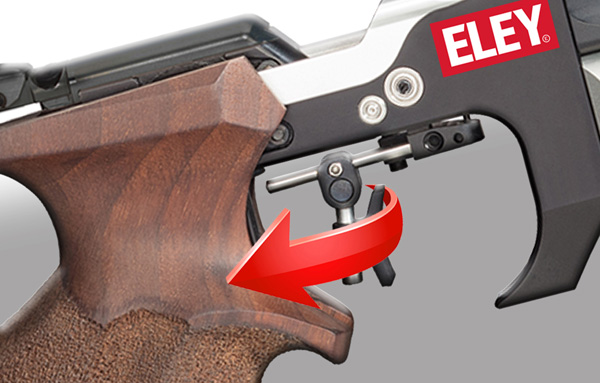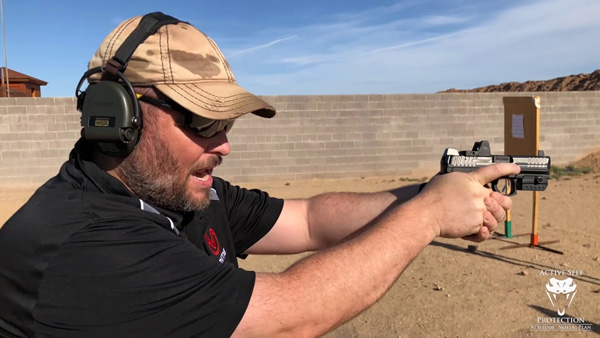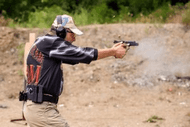Trigger Pull Techniques for Improved Accuracy
Posted by Ranger Point Team on Nov 18th 2021
Most firearm shooting is done either for hunting, defense, or recreational activities. Certain skills such as posture, sight picture, trigger press, trigger type (curved or flat trigger), and breath control apply to all forms of firearms shooting. Using the correct handgun trigger pull technique is an important factor that improves accuracy. To achieve accurate shots, one will need to master the art of pulling the trigger. Whatever your target might be, applying the right pressure to the trigger pull is the key.
There are three techniques for pulling the trigger that will improve the accuracy. Various techniques on how to pull a trigger impact the overall shooting experience for the shooter. These techniques allow the shooter to have the right trigger control. Let us now look into these techniques:
Surprise Trigger Break
(Image Source: Top Brass)
Whether you are a beginner or an expert, surprise break trigger pull techniques work best for every firearm shooter. This technique reduces the flinching that gets caused due to the anticipation of flash and recoil. With this technique, the user applies pressure to the flat trigger gradually until the firearm releases fire. To apply the pressure in a controlled way one will need to curl the trigger finger towards the thumb. Instead of trigger press, the focus of the shooter is on the target. With practice, one can learn to apply pressure on a pistol trigger pull in a smooth way. Surprise trigger break works on all types of pistols be it single action semi-automatics or double action, revolvers, or striker-fired guns.
Two-Stage Trigger Pull

(Image Source: Eley)
A two-stage or a double-stage trigger pull uses two separate pulls before the firearm releases the firing pin. With this technique, the user pulls 75% of the trigger, then pauses, and finally fires. The two-stage trigger pull allows smooth and precise trigger pull with no chance of any accidental discharge. With this technique, the users can ensure that the sights are on their target. This technique, although can be applied to most firearms, is most suitable for double-action semi-automatic firearms. The two-stage trigger pull allows the user to prepare the trigger and make adjustments in the aim. It even helps to identify the target with precision and in case the target has moved the user can abort and restart again. This technique is more prevalent in shooting games and handgun hunting.
Compressed Surprise Break

(Image Source: Youtube)
A compressed trigger break is quite similar to a surprise break with a slight difference in the focus. The ultimate result in both surprise break, as well as compressed surprise break, remains the same with trigger breaks with smooth press and the firearm fires. In surprise break, the user constricts the trigger till the firearm discharges. In a compressed surprise break, the squeeze focuses on the trigger break. The focus of the compressed trigger is on the break. In surprise break, the focus is the squeeze. Compressed trigger break is faster and best for defensive shooting. With a compressed surprise break, the firearm stays in alignment with the target. The shooter moves and adjusts their hand's movements to grip the trigger and depress it simultaneously.
Tips to Improve Trigger Pull Accuracy
- One requires a lot of self-discipline and practice to become a good shooter. Take care of your posture, grip, and aim and target while using the firearm.
- One must ensure that there is no pressure on the arm and no anxiety in mind while pulling the trigger.
- Ensure to establish a firm grip before aiming at the target.
- Stay focused on the target. It is best to avoid thinking about the trigger pull
- Practice hard to avoid jerking the triggers
- Apply sustained, consistent, and uniform pressure on the trigger
Conclusion
One must focus to practice smooth and consistent trigger pull techniques to get an accurate shot. Also, ensure that you keep up with the pace and pull the trigger at the same pace at all the stages. To achieve accuracy, one must dry practice over and over again till they get a complete understanding of the trigger pull techniques. Also if you are a new user, ensure that you are aware of all the fundamental principles and components of firearms.
Frequently Asked Questions
What is trigger discipline?
Trigger discipline is the practice of keeping your finger off the trigger until you are ready to shoot. It's important because even if your gun is unloaded, if you have your finger on the trigger and it accidentally goes off, you could injure someone.
What is the difference between squeezing and pulling a trigger?
Trigger squeezing is when you use the pad of your finger to depress the trigger. Trigger pulling is when you use the first joint of your index finger to depress the trigger.
Does a lighter trigger increase accuracy?
Yes, there is some evidence that a lighter trigger does increase accuracy because it allows you to get a better grip on the gun and prevents your finger from slipping off the trigger.

